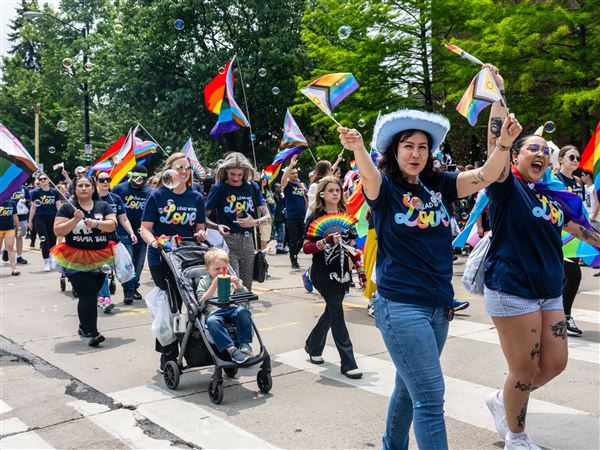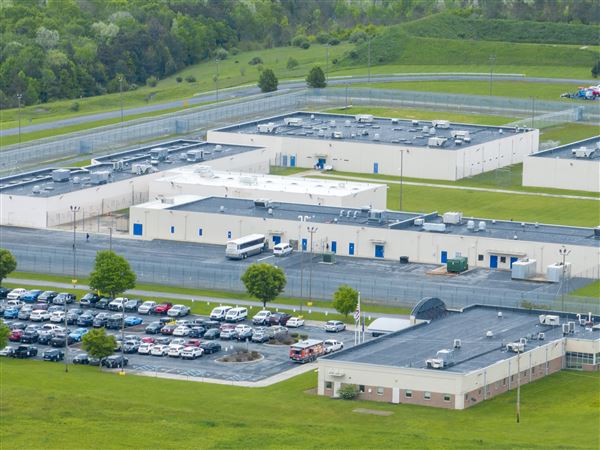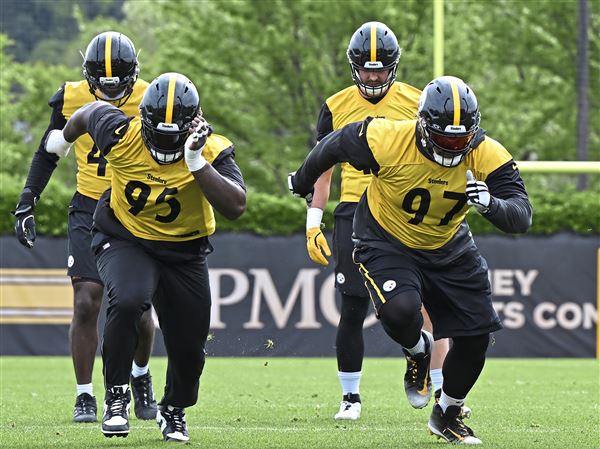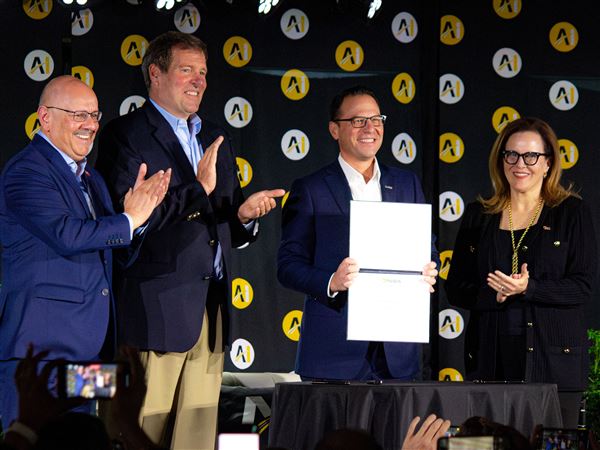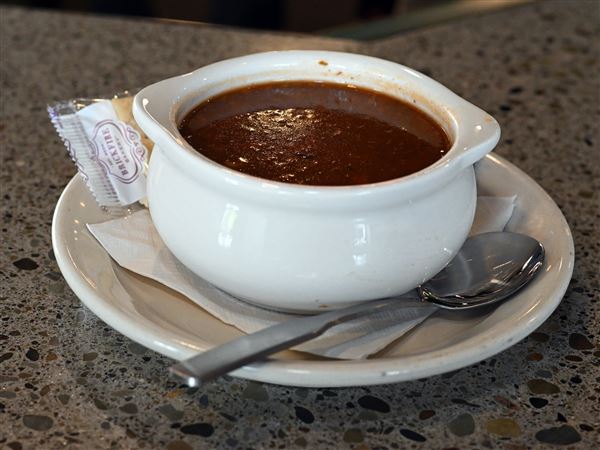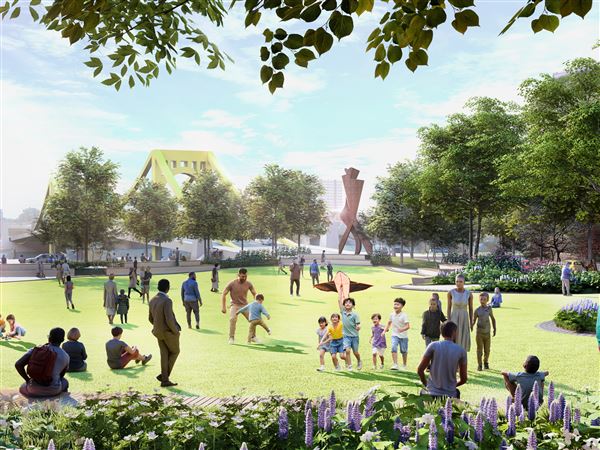HAZLETON, Pa. -- Hazleton is a 5-square-mile city of about 25,000, slanting up and down across a valley 90 minutes up Interstate 81 from Harrisburg.
It was a mining town that had been in economic decline for decades. Its population was old and white. Its infrastructure is aging. It lacks a trendy arts scene.
So why did so many Hispanics come here? Because it was better than where they came from.
In 2010, Hazleton's population was 37 percent Hispanic, according to the U.S. Census. About 80 percent of those Hispanics are Dominican, estimates Amilcar Arroyo, a Hazleton Integration Project board member who has lived in the city for 23 years and runs a Spanish newspaper.
Hazleton is the second or third stop for most of those Dominicans after Brooklyn, N.Y., the Bronx or Newark or Paterson, N.J.
"It's quiet," said Efrain Aviles, who moved here from Brooklyn in October. "Something better for the kids. The housing is much cheaper. You live in New York in a two-bedroom apartment for $1,500. Here, you rent the whole house for 700 bucks."
And there are jobs. Meat-packing jobs and jobs in warehouses for Amazon and Michael's that don't require advanced education.
They come after their families implore them to move. Much of the city's Dominican population can trace its roots back to a single town, San Jose de Ocoa, Mr. Arroyo said.
When the Hispanic population started to boom in the early 2000s, Hazleton's crime rate rose, but it was nothing compared to the violence many of the new residents saw on the streets of New York's outer boroughs.
Many of the newcomers were poor and lacked health insurance. For years, the hospital ran deficits because of the number of people visiting the emergency room who could not pay. At first, they rented homes, which did little to raise the tax money needed to pay for the spike in school students.
U.S. Rep. Lou Barletta, who was then mayor, and his allies blamed the problems on the illegal immigrants among the Hispanic influx, while always saying the city welcomed all legal immigrants. The city council passed, and Mr. Barletta signed, the ordinance, which punished businesses that hired someone who is later found out to be in the country illegally.
There was no way to easily identify who was legal and who was illegal -- or accurately say how many illegal immigrants had come to Hazleton. Many Hispanics felt Mr. Barletta was targeting them.
A court threw out the law, but the landscape had changed. Mr. Barletta was a star in the conservative media and Hazleton was a symbol.
And yet Hispanics kept coming. Between 2000 and 2010, Hazleton's population grew by 2,011 people. Without that, Luzerne County's total would have decreased during the same span. That growth was almost entirely Hispanic.
As the Hispanic community became more established, its members bought homes and cars. In the minds of some business owners, "poor families" were now "young, growing families." Retail chains expanded their footprints, and local companies saw their bottom lines benefit, too.
Even though it still has to cover a significant number of uninsured patients, the hospital system has turned a profit the last two years.
Because the start-up costs are so low, many of the newcomers opened corner stores, restaurants and beauty salons. Record stores and electronic repair shops, specialties that closed in most downtowns 20 years ago, popped up.
Wyoming Street is bustling with Hispanic businesses, while Broad Street -- once the center of the city's commerce -- is languishing. Across the street from the Chamber of Commerce, a facade is all that is left of a storefront.
Carmen DeLese, who has owned Carmen's Bakery and Deli for 50 years, hopes the new wave of Hispanic entrepreneurs will eventually revitalize his end of the street.
"There was a time when some people said, 'They have of lot of people who are here who are illegal' or 'They don't speak English,' " Mr. DeLese said. "I think that's going to change. It's just a matter of time until people get acclimated to one another."
Joe Maddon, native son and manager of baseball's Tampa Bay Rays, had this idea: Build a community center that would unite the old Hazleton he grew up with and the new Hazleton he saw as an important part of its future.
He founded the Hazleton Integration Project last year. As the group raises money for the center, it is trying to start the work of introducing people and succeeding where others have failed.
Not everyone is convinced.
Joseph Yannuzzi, the mayor, said some old-timers tell him that Mr. Maddon doesn't understand what's happening in Hazleton because he just drops in a few times a year. They say he doesn't belong anymore.
"I could see younger people move towards it," said Mr. Yannuzzi, who supports the integration project, "but some people, you're just not going to change."
Bill Webber, owner of Bill & Joyce's Bar in the old Irish neighborhood, gave a weary stare when asked if Hazleton needed the community center Mr. Maddon envisions.
"The city needs something, but I don't know what," he said, then paused a beat. "It needs about 40 more cops."
Crime is the real problem, he said. Not every white person is an angel, but things have changed as more Hispanics have moved to town, he said.
"They're the ones that don't want to cooperate," he said.
Later, he added, "I've never had to carry a gun until the last couple of years."
The beauty of the integration project, Mr. Maddon has said, is that it is nonpartisan.
Mr. Barletta endorsed the project. The congressman -- who if re-elected in November will represent parts of Cumberland, Dauphin and Perry counties -- said it fits with his philosophy of helping legal immigrants step into American life. It also validates his belief, he said, that the national media created a false narrative about the environment in Hazleton six years ago.
"Our Latino population has grown every year since the ordinance was passed," Mr. Barletta said. "That defies the logic that this isn't a place that likes immigrants. You wouldn't come here. You wouldn't bring your family here. You wouldn't stay here."
But what happens if the 3rd U.S. Circuit Court of Appeals says that at least part of the ordinance is legal? The court has scheduled oral arguments in Hazleton's case for July 27. The U.S. Supreme Court has ruled a similar law in Arizona is constitutional.
Mr. Yannuzzi expects to win. So does Mr. Barletta.
"I believe we'll wind up under the same media microscope again," Mr. Barletta said.
What would that do to the progress that has been made?
The city would passively enforce the law. Instead of sending inspectors to job sites, it would act if an employee was arrested for something else. Still, some in the Hispanic community worry about profiling.
But the ordinance's moment, and power, might have passed.
"Most people are starting to watch who they're hiring," Mr. Yannuzzi said. "Once we have our decision, whether there's going to be sweeping changes in Hazleton, I doubt it."
And that includes the city's population of illegal immigrants, however large or small it really is.
"We're never going to solve the illegals coming here, not with this ordinance or anything else," Mr. Yannuzzi said. "They're going to come here no matter what."
First Published: July 8, 2012, 8:00 a.m.
